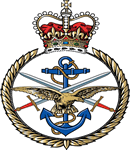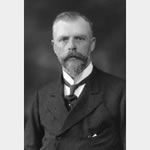Commemorated: | |||
Awards & Titles: | Knight Grand Commander of the Star of India Knight Grand Commander of the Indian Empire Mentioned in Despatches Deputy Lieutenant Justice of the Peace | ||
Early Life :
Arthur Oliver Villiers Russell was born at the Palazzo Chigi in Rome, 1869 eldest son of 1st Baron Ampthill and and Lady Emily Theresa (née Villiers). He became successor as 2nd Baron Ampthill aged 15. He was educated at Eton College and gained a 3rd class degree in History from New College, Oxford. He was better at rowing, taking part in the Boat Race against Cambridge University three times and being on the winning side twice. He was a member of the original International Olympic Committee from 1894 to 1898.Vanity Fair described him thus: “He is a very tall, very agreeable, and good-looking young man, with a long, strong back, which is worth much in a boat. He is a Freemason and a Liberal Unionist, though he has not yet become famous in the House of Lords. He intends to devote himself to the management of Foreign Affairs. He can shoot. He has many friends who call him Dick”.
He married Margaret, third daughter of Frederick Lygon, 6th Earl Beauchamp at Madresfield in Worcestershire in 1894. He was Private Secretary to the Colonial Secretary, Joseph Chamberlain, in 1897 and was appointed Governor of Madras in 1900 at the age of 31, serving until 1905. He was interim Viceroy of India in 1904 during which time he refused a petition to create a separate state of Orissa from part of the Madras Presidency. Lord Ampthill championed the cause of the Indians in South Africa and wrote an introduction to a biography of the young Gandhi in 1909.
In 1919 he bought the Oakley House estate from his cousin the Duke of Bedford. He was also a member of the Magic Circle.
Service Life:
Campaigns:
- The First World War 1914-1918, World-wide.
| Unit / Ship / Est.: 13th Battalion Leicestershire Regiment |
| Action : War Survivor |
Although many perished in times of national conflict and in the service of their country, many more survived including those interned as Prisoners of War. Stories of those who did survive are included as part of this site, especially those with high gallantry awards, those included against an external rolls of honour and those who had a distinguished career in wartime and military leaderhip.
Detail :
During the First World War Lord Ampthill commanded units in the field, specifically the 13th Battalion, Leicestershire Regiment and 8th Battalion, Bedfordshire Regiment. He was mentioned in despatches three times and retired in 1919 with the rank of Colonel.
Oakley War Memorial "Arthur Oliver Villiers Russell, 2nd Baron Ampthill served on the Western Front with two units during the First World War. One these was 13th Battalion, Leicestershire Regiment, a labour battalion which later became part of the Labour Corps. He also served for a short time, as a lieutenant-colonel, with the 8th Battalion, Bedfordshire Regiment. He transferred to the battalion on 3rd April, 1917, taking over command from Colonel Lord Henry Scott the following day. A battalion was part of a regiment (seven battalions of the Bedfordshire Regiment served overseas between 1914 and 1918). It numbered around a thousand men at full strength but was often much less than this due to sickness, injuries and deaths in the front line. In the First World War four (later three) battalions comprised a brigade and three brigades a division.
8th Battalion was part of 16th Brigade of 6th Division. Bedfordshire and Luton Archives and Records Service has the war diaries of the battalion throughout its time in France [X550/9/1]. On the day he took over command the battalion was in front line trenches near Loos-en-Gohelle, scene of a major offensive in September 1915. On his first day in command an officer was wounded, one other rank was killed and three more wounded from “daily wastage” of shellfire and sniping.
The first real test of his command came quickly. On 15th April, with the battalion in trenches as brigade reserve between Vermelles and Grenay orders were issued for an attack in conjunction with the 1st Battalion, the Buffs. They moved up to a position south of Loos under a heavy German barrage and finally occupied the position. Twenty eight other ranks were wounded. The next day two companies bombed their way to their first objective. However, the battalion on their left failed to reach this and retired to its former position. This exposed the flanks of both companies to German counterattack, but despite these attacks they maintained all the ground they had gained, losing two men killed and seventeen wounded.
The next day, the 17th, the battalion continued to move forward in attack towards Hill 70. Any slight elevation in this almost entirely flat landscape was a considerable prize. One company was held up by a strong point in front of the brigade on its right, but the other, again took all its objectives, capturing twenty seven prisoners and a machine gun. For the remainder of the day the enemy bombarded the newly won ground but despite casualties the ground was held. The battalion was congratulated for their good work by its Brigadier and by the General Officer Commanding 6th Division. Three other ranks were killed and seventeen wounded on this day.
The next day a company from the battalion made an attack from three points on the strong point which had threatened the right flank since the day before. This attack failed through the devastating fire poured on it from concrete emplacements by hostile machine guns. Seven other ranks were killed and thirty three wounded. The next day, the 19th, all the ground previously gained was held despite many German attacks and a very heavy hostile barrage. At night the battalion was relieved. Total casualties in this four day action were two officers and seventeen other ranks killed, four officers and ninety one others ranks wounded. It was a fairly typical Great War action, partly successful, partly a failure.
The battalion moved back, rested, and then went forward to the front line again, at Cité-Saint-Elie on 21st. the war diary notes that on 25th: “At 11.0pm a hostile patrol slipped through a large gap on our front immediately after the place had been patrolled. They bombed one of our posts causing several casualties and took away one man as a prisoner”. One soldier was killed and six wounded in addition to the man captured. Patrols were constantly sent out at night by each side to seize prisoners to extract information, as well as to kill the enemy, seize or damage equipment and to lower his morale. No doubt this last happened with the 8th Bedfords following this embarrassing incident.
The battalion remained near Loos throughout May, alternating spells in the front line with periods in reserve and resting. Lord Ampthill left the battalion on 19th May for: "employment under the Director of Labour", perhaps in connection with the 13th Leicesters."
He died of pneumonia on 7th July 1935 and commemorated in the church where he acted as Church Warden, Oakley.
See also Bedfordshire Council Archives.
Masonic :
| Type | Lodge Name and No. | Province/District : |
|---|---|---|
| Mother : | Apollo University No. 357 E.C. | Oxfordshire |
| Joined : | Bedfordshire Lodge of St John the Baptist No. 475 E.C. | Bedfordshire |
| Joined : | Stuart No. 540 E.C. | Bedfordshire |
| Joined : | Bard of Avon No. 778 E.C. | Middlesex |
| Joined : | Ampthill No. 2490 E.C. | Bedfordshire |
| Joined : | Lodge of Perfect Unanimity No. 150 E.C. | Madras |
| Joined : | Royal Alpha No. 16 E.C. | London |
| Joined : | Grand Master's No. 1 E.C. | London |
Initiated | Passed | Raised |
25th November 1890 | 27th January 1891 | 24th February 1891 |
Arthur's mother lodge is Apollo Lodge No. 357, noting that his surname is recorded as Villiers in the contribution ledgers of United Grand Lodge. His initition in 1890, aged 21, marks a long and distinguished career rising to eventually become Pro Grand Master, a position which he held from 1908 until his death. At this time he was listed as Baron Ampthill and resident at 19 Stratford Place, West London.
Joined Bedfordshire Lodge of St John the Baptist No. 475 28th January 1892 at Luton. He was one of only two members to join this lodge in that year. In the same year he joined Stuart Lodge No. 540 on 24th February 1892 at Bedford and Bard Of Avon Lodge No. 778 at Hampton Court on 20th July 1892. Ampthill Lodge No. 2490, there being more than one connection with his title, was joined in 1894. In 1900, 10 years after his initiation he made a real mark in his rulership in the Craft by his appointment as Provincial Grand Master of Bedfordshire. In 1901, he became the District Grand Master of Madras holding the post until 1906. During his time in India, as His Excellency, The Governor he joined Lodge of Perfect Unanimity No. 150 on 4th February 1901 at Madras and also Lodge of Faith, Hope & Charity at Ooctamund on 4th August, 1903.
He further joined Royal Alpha Lodge No. 16 in 1908, and just prior to the First World War joined the Grand Master's Lodge No. 1 on 17th March, 1913
Lodge Ampthill Lodge No.3682 was consecrated in his name in 1914, and continues to meet in Coimbatore, India, under the District Grand Lodge of Madras.
Source :
The project globally acknowledges the following as sources of information for research across the whole database:
- The Commonwealth War Graves Commission
- The (UK) National Archives
- Ancestry.co.uk - Genealogy, Family Trees & Family History online
- ugle.org.uk - The records of the United Grand Lodge of England including the Library and Museum of Freemasonry
Additional Source:
- Founder Researchers : Paul Masters & Mike McCarthy
- Researcher : Bruce Littley

